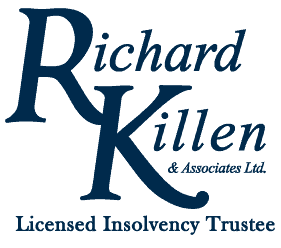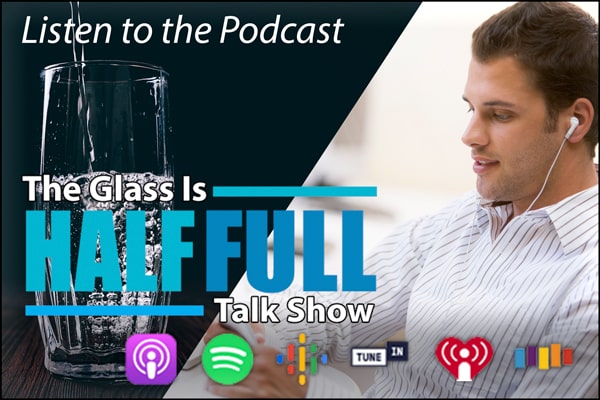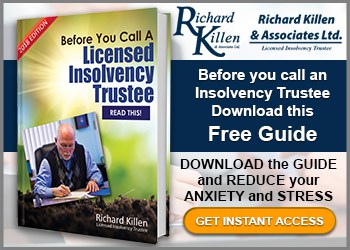Why Young Adults Are Filing for Bankruptcy in Ontario

Filing for bankruptcy in Ontario is becoming a reality for more young adults as they face overwhelming financial pressure. From student loans and credit card debt to unstable employment and rising living costs, the financial landscape for millennials and Gen Z in Canada has become increasingly difficult to navigate. As a result, more young people are turning to bankruptcy in Ontario as a last resort—but many still don’t understand that bankruptcy is a legal solution designed to help them reset and rebuild.
The Debt Crisis Facing Young Adults in Ontario
Young adults in Ontario are entering adulthood with unprecedented levels of debt. According to recent data, Canadians aged 18 to 34 carry some of the highest levels of unsecured debt, including:
- Credit card debt
- Student loans
- Personal loans
- Buy-now-pay-later balances
- Overdrafts and payday loans
Many are juggling multiple payments while earning entry-level wages or working in precarious gig roles. The result? A growing number of young Ontarians are falling behind on payments, facing collection calls, and experiencing severe financial stress.
There is no single cause behind the growing number of young adults filing for bankruptcy in Ontario, but there are recurring factors that paint a clear picture of a generation under financial stress. Let’s explore the most common reasons.
Credit Card Debt and Poor Financial Literacy
Many young adults begin using credit cards in their late teens or early twenties without fully understanding how interest works or how quickly balances can grow. It’s easy to spend more than one can afford—especially with the pressure of social media and lifestyle expectations.
Missed payments lead to growing interest charges, and soon minimum payments are all a borrower can manage. Eventually, the situation becomes unmanageable.
Credit card debt is one of the most common types of unsecured debt included when filing for bankruptcy in Ontario, and young adults often carry balances well beyond their ability to repay.
Underemployment and Income Instability
Ontario’s job market has shifted dramatically in the past decade. While some sectors are booming, many young adults are stuck in part-time, contract, or gig work with no benefits and unpredictable income. This instability makes it difficult to budget, save, or manage debt responsibly.
Without a consistent income, even modest debt can spiral out of control. Missed payments lead to penalties, interest hikes, and damaged credit—creating a cycle that’s hard to escape. For many, filing for bankruptcy in Ontario becomes the only viable way to stop the bleeding and start fresh.
Rising Cost of Living and Housing
The cost of living in Ontario—especially in cities like Toronto, North York, and Mississauga—has skyrocketed. Rent, groceries, transportation, and utilities are consuming a larger share of young adults’ income than ever before. Many are forced to rely on credit just to cover basic expenses.
This reliance on credit leads to mounting credit card debt, which often carries high interest rates. When minimum payments become unaffordable, and debt collectors start calling, bankruptcy in Ontario may be the only way to regain control.
High Student Loan Debt in Ontario
Student loan debt is one of the leading causes of financial hardship among young Canadians. With the cost of higher education continuing to climb, many young adults graduate with tens of thousands of dollars in federal and provincial student loans.
Although government student loans cannot usually be discharged in bankruptcy unless they are more than 7 years old, the burden of repayment often leaves borrowers unable to manage their credit card debt, car loans, or personal loans. These unsecured debts quickly spiral out of control, leading some to consider declaring bankruptcy in Ontario as a last resort.
Buy Now, Pay Later Culture
With the rise of “buy now, pay later” platforms, it’s easier than ever for young adults to purchase items on credit without immediate consequences. These platforms often come with high fees or late penalties, and multiple purchases can create overlapping repayment schedules that are hard to track.
This culture encourages overspending and normalizes debt, which can lead to an unhealthy relationship with money and a false sense of financial security.
The Role of Consumer Proposals
Before filing for bankruptcy, many young adults explore consumer proposals in Ontario. A consumer proposal is a legally binding agreement to repay a portion of your unsecured debt over time—usually at a reduced amount and with no interest.
For those with a stable income but overwhelming debt, a consumer proposal in Ontario can be a powerful alternative to bankruptcy. It protects assets, avoids bankruptcy’s stigma, and offers a structured path to financial recovery.
However, whether you choose a consumer proposal or bankruptcy, the first step is always the same: consult a Licensed Insolvency Trustee (LIT).
Bankruptcy Is There to Help You Move Forward
It’s important to remember that bankruptcy in Ontario isn’t a punishment—it’s a legal process designed to help people deal with debt they can’t manage on their own.
As Licensed Insolvency Trustee Richard Killen explains:
“The BIA is the only Canadian legislation ‘designed to allow individuals to resolve an otherwise unsolvable debt problem.’ A visit to a trustee is the only sure way you can discover and understand ALL your options, so consult a LIT as soon as you can.”
This highlights why getting professional guidance matters. A Licensed Insolvency Trustee (LIT) will assess your unique financial situation, walk you through all available options—including consumer proposals and bankruptcy in Ontario—and help you choose the solution that aligns with your goals.
Rethinking Bankruptcy: A Legal Path to a Fresh Start
Financial stress doesn’t just affect your wallet—it impacts your mental health, relationships, and overall well-being. Many young adults report anxiety, depression, and sleepless nights due to debt. The shame and stigma surrounding bankruptcy often prevent them from seeking help early.
By reframing bankruptcy in Ontario as a legal and strategic solution, we can help young adults take control of their finances and protect their mental health. The sooner you speak with a Licensed Insolvency Trustee, the more options you’ll have.
What Bankruptcy Can and Can’t Do
When you file for bankruptcy in Ontario, several immediate protections and benefits take effect:
- Debt Collection Stops – Creditors must stop calling, sending collection letters, or taking legal action.
- Wage Garnishments End – Any current wage garnishments are lifted.
- Debt Is Discharged – Most unsecured debt, including credit card debt, personal loans, and payday loans, is eliminated.
- Fresh Start – After completing the bankruptcy process, you can begin rebuilding your credit and financial life.
While bankruptcy in Ontario can eliminate most unsecured debt, it’s not a magic wand. It doesn’t erase secured debts like mortgages or car loans unless you surrender the asset. It also doesn’t automatically discharge student loans unless specific conditions are met.
That’s why consulting a Licensed Insolvency Trustee is essential. They’ll help you understand what debts can be discharged, what assets you can keep, and whether a consumer proposal in Ontario might be a better fit.
Conclusion – Reclaiming Financial Control
The financial challenges facing young adults in Ontario are real—and growing. But so are the solutions. Whether you’re dealing with credit card debt, student loans, or unsecured debt, it’s crucial to understand that bankruptcy in Ontario is a legal, federally regulated option designed to help you reset.
Many young adults are struggling—but don’t realize that bankruptcy is a legitimate legal tool. It’s a legal option—and sometimes the smart one.
If you’re feeling overwhelmed, don’t wait. Reach out to a Licensed Insolvency Trustee today to explore your options. Whether it’s a consumer proposal or filing for bankruptcy in Ontario, the right plan can help you rebuild your credit, protect your assets, and take control of your future.
Ready to Hit Reset on Your Finances?
If debt is holding you back, don’t wait until it becomes unmanageable. Filing for bankruptcy in Ontario or exploring a consumer proposal could be the reset you need. Speak with a Licensed Insolvency Trustee today to understand your full range of options—confidentially, legally, and without judgment.
Your fresh start begins with one conversation. Book your free consultation now.
Student Loan Debt in Ontario: What Grads Need To Know

For many recent graduates, student loan debt in Ontario is more than just a monthly payment—it’s a financial reality that shapes career choices, housing decisions, and mental health. Whether you borrowed through OSAP, the Canada Student Loans Program, or took out a private student loan, the pressure to repay can feel relentless—especially when life after graduation doesn’t go exactly as planned.
Here’s the reality: Canadians owe over $28 billion in government-backed education financing, and Ontario borrowers carry a significant share of that burden. The average student loan debt in Canada is approximately $26,075 per borrower, with some individuals—especially those in professional programs—leaving school with balances exceeding $100,000.
Ontario also leads the country in tuition costs, with undergraduate programs averaging $6,834 and graduate programs around $7,437. Executive MBA programs in the province top the charts at $93,985, compared to just $13,719 in Quebec. It’s no wonder so many people turn to private student loans, lines of credit, or bank-issued tuition financing just to get through school.
Whether you’re just starting repayment or years into juggling multiple obligations, understanding your legal options is essential. Relief may be closer than you think—but it depends on the type of academic borrowing you’ve taken on, how long you’ve been out of school, and whether you’re ready to explore solutions beyond traditional repayment. With the right guidance, even the most overwhelming education-related debt can be addressed strategically and lawfully.
What’s the 7-Year Rule?
The 7-year rule is one of the most misunderstood aspects of student loan bankruptcy in Ontario. Under Section 178(1) of the Bankruptcy and Insolvency Act, government-issued education support—whether federal or provincial—can only be discharged through bankruptcy or a consumer proposal if it has been at least seven years since you were last enrolled in full-time or part-time studies.
This means:
- The clock starts ticking from the last day you attended classes, not when you got the funding.
- If you go back to school—even for one course—the clock resets. You’ll need to wait another seven years from that new date.
- You don’t have to graduate for the rule to apply. You just need to stop being a student.
The Hardship Provision: A Possible Early Exit From Debt
If it’s only been five years, there’s still hope. You might qualify under something called the hardship provision—an exception that allows you to apply to the court to have your education-related debt discharged earlier. To be eligible, you’ll need to show that you’ve made a genuine effort to repay and are facing extreme financial hardship. Just keep in mind: this isn’t automatic. It involves a separate legal process, and approval isn’t guaranteed.
A Licensed Insolvency Trustee (LIT) is the person who can walk you through your options and figure out what’s possible based on your situation.
Before we dive into your options for debt relief, it helps to break down the types of education funding you might have received—because not all of them follow the same rules when it comes to bankruptcy.
Federal vs. Provincial Funding: What’s the Difference?
If you borrowed through government programs, you likely received a mix of federal student loans and provincial student loans. They’re often bundled together during school, but they’re managed separately once repayment begins—and they come with slightly different rules and support options.
Federal Student Loans (Canada Student Loans Program)
- Issued by the federal government
- Administered through the National Student Loans Service Centre (NSLSC)
- Subject to the 7-year rule for discharge through bankruptcy or a consumer proposal
- May qualify for the Repayment Assistance Plan (RAP) to reduce or pause payments based on income
Provincial Student Loans (Ontario Student Assistance Program – OSAP)
- Issued by the Ontario government
- Managed by the Ministry of Colleges and Universities
- Also subject to the 7-year rule under bankruptcy law
- OSAP funding is often a mix of grants and loans:
- Only the loan portion is eligible for discharge
- You’ll need to confirm how much of your OSAP support was repayable
- Offers its own repayment assistance programs, separate from federal options
Even though both types of funding follow the same discharge timeline, the way they’re administered—and the kind of help available—can vary. That’s why it’s worth reviewing both sides of your education financing before making any decisions.
What About Private Student Loans?
Now let’s talk about private student loans—which includes student lines of credit, bank-issued borrowing, or co-signed personal funding. These are totally different from government loans.
Here’s the good news:
- They’re not subject to the 7-year rule
- You can include them in a bankruptcy or consumer proposal right away
- They often come with higher interest rates and fewer protections
So if your debt is mostly private—maybe you used a credit card for tuition or took out a bank loan—you might be eligible for relief much sooner than you think.
Bankruptcy vs. Consumer Proposal: Which One’s Better?
Both options can help you get out from under your education-related debt, but they work a little differently.
Bankruptcy
- Discharges eligible debts, including student loans (if the 7-year rule is met)
- Requires surrendering certain assets
- Affects your credit for 6–7 years
Consumer Proposal
- Negotiates a reduced repayment plan with creditors
- Can include student loans if the 7-year rule is met
- Allows you to keep assets
- Affects your credit for 3 years after completion
If your tuition-related obligations are older than seven years, either option may work. If not, a consumer proposal can still help by reducing other liabilities and freeing up cash flow to stay current on your education-related payments.
Why You Need a Licensed Insolvency Trustee (LIT)
Navigating student loan bankruptcy in Ontario isn’t something you should try to figure out on your own. A Licensed Insolvency Trustee will:
- Look at your funding sources and repayment history
- Confirm your last date of study
- Check if you qualify under the 7-year rule or hardship provision
- Explain how bankruptcy or a consumer proposal would affect your credit, assets, and future borrowing
LITs federally regulated professionals—not debt consultants or credit counselors—and their advice is legally binding and confidential.
Debt Relief Is Possible—But Timing and Guidance Matter
Education-related debt can feel like an impossible burden, but there are paths forward. If you’re an Ontario grad struggling with repayment, it’s crucial to understand your options. The 7-year rule is a key threshold for discharging federal and provincial student loans through bankruptcy or a consumer proposal, while private student loans may be eligible for immediate relief. The key is knowing what kind of funding you have and how long it’s been since you left school.
Whether you’re considering bankruptcy for student loans, exploring a consumer proposal, or seeking repayment assistance, the most important step is to get accurate information from a qualified professional.
People are always assuming that you can’t resolve a tax debt or student loan debt through the bankruptcy/proposal system. And they are usually wrong. However, it’s complicated and you need a LIT to explain how it works for your individual case.
Don’t let misinformation keep you stuck. A Licensed Insolvency Trustee can help you assess your eligibility, explore alternatives, and take the first step toward financial recovery. Whether you’re just out of school or years into repayment, relief is possible—and it starts with understanding your rights.
Take Control Of Your Financial Future
Education debt doesn’t have to define your future. A Licensed Insolvency Trustee can help you understand the 7-year rule and take confident steps toward relief. Call today for a free, confidential consultation. Call 1-888-545-5365 to talk to a Trustee now.
Money Mistakes Young Canadians Make in Their 20s

Financial independence in one’s 20s often comes with limited experience and minimal formal education in personal finance. For many young adults in Canada, this period marks the beginning of financial decision-making—yet it is also when some of the most costly money mistakes occur.
According to Statistics Canada, Canada now has the highest household debt-to-disposable income ratio in the G7, sitting at 185%, compared to the G7 average of 125%. This debt burden is especially pronounced among younger Canadians, who are increasingly turning away from homeownership due to rising mortgage costs, unaffordable rent, and sustained inflation in essentials like food and transportation.
Meanwhile, a 2025 national survey revealed that 41% of Canadians aged 30–44 say financial mistakes have delayed key milestones, such as paying off debt or making major purchases. Nearly 46.4% struggle to build savings, and 42% of young Canadians turn to loved ones for financial support after making money mistakes. On top of that, Gen Z is now the most targeted demographic for financial fraud, with 45% reporting scam attempts in 2024, yet 51% say they wouldn’t talk about it with family, increasing their vulnerability.
From credit card debt to lifestyle inflation, the most common money mistakes in your 20s aren’t just about numbers—they’re about habits, blind spots, and missed opportunities. The good news? These missteps are fixable. With a little guidance and a lot of intention, you can rewrite your financial story before it’s too late.
Why Financial Planning Isn’t Second Nature
Financial planning is not a standard part of the Canadian school curriculum. While students graduate with knowledge of literature, mathematics, and science, few leave with practical skills in budgeting, credit management, or tax filing. This lack of formal education leaves many young adults unprepared to make informed financial decisions, increasing their vulnerability to costly financial mistakes early in life.
Even well-intentioned choices—such as taking out student loans, signing rental agreements, or applying for credit cards—can have long-term consequences if made without a clear understanding of personal finance. Compounding the issue is the fact that financial topics are often considered private or uncomfortable to discuss within families. As a result, many young Canadians learn through trial and error, often after experiencing setbacks.
Improving financial literacy requires proactive engagement. Free resources such as the Financial Consumer Agency of Canada, nonprofit organizations, and reputable personal finance educators offer accessible tools and guidance. By seeking out this information early, individuals can build confidence and competence in managing their finances and avoid common money mistakes that hinder long-term stability.
The Most Common Money Mistakes in Your 20s
- Living Without a Budget
Many young adults rely on mental math or bank app balances to gauge spending, which often leads to overspending and surprise overdrafts. Without a clear plan, it’s easy to lose track of where your money is going.
How to Fix it: Use budgeting tools like Mint, YNAB, or even a simple spreadsheet. Allocate funds for essentials, savings, and discretionary spending. Budgeting isn’t restrictive—it’s empowering. - Misusing Credit Cards
Credit cards can be a helpful tool for building credit, but they’re also a trap if misused. Racking up debt for lifestyle purchases or only paying the minimum balance leads to high interest and long-term financial strain.
How to Fix it: Treat your credit card like a debit card. Only charge what you can pay off in full each month. If you’re already in debt, prioritize high-interest balances and consider a balance transfer or debt consolidation. - Ignoring Retirement Savings
Retirement feels light-years away in your 20s, but delaying savings is a costly mistake. Thanks to compound interest, even small contributions now can grow exponentially over time.
How to Fix it: Open a TFSA or RRSP and automate monthly contributions—even $50/month makes a difference. Take advantage of employer-matching programs if available. - Spending More Than You Earn
This is the cardinal sin of Canadian personal finance. It’s tempting to keep up with friends who are always eating out, traveling, or upgrading to the latest tech. But living a lifestyle that exceeds your income is a guaranteed way to stay broke. Delayed gratification is tough, but essential.There is no law against being young and inexperienced. It happens to all of us. However, there is one old adage which explains the fundamentals of solvency: ‘Spend less than you bring in.’ If you don’t, whether through sheer necessity, ignorance or just lack of prudent spending habits (such as delaying gratification) you will eventually have to see an Insolvency Trustee someday. Whether it’s lifestyle inflation, peer pressure, or poor planning, spending beyond your means leads to debt and financial instability.
How to Fix it: Track your income and expenses. If your spending exceeds your income, cut back on non-essentials, negotiate bills, or find ways to increase earnings through side gigs or freelance work. - Not Building an Emergency Fund
Life is unpredictable. Car repairs, job loss, or medical expenses can derail your finances if you’re unprepared. Many young adults skip this step, assuming they’ll “figure it out” when the time comes.
How to Fix it: Aim to save 3–6 months’ worth of expenses in a high-interest savings account. Start small—$500 is better than nothing—and build gradually. - Overcommitting to Housing Costs
Buying or renting beyond your means is a common trap. Whether it’s the allure of a trendy condo or pressure to “invest” early, housing costs can eat up a disproportionate chunk of your income.
How to Fix it: Follow the 30% rule—your housing costs should not exceed 30% of your gross income. Consider roommates, smaller spaces, or living slightly outside major urban centres to save.
How to Avoid Financial Mistakes When You’re Young
Avoiding money mistakes in your 20s isn’t about perfection—it’s about awareness and intention. Here are some proactive strategies to help you stay ahead:
- Educate Yourself – Read Canadian personal finance blogs, listen to podcasts, and follow experts like Preet Banerjee or Melissa Leong who are well-known and respected personal finance educators in Canada.
- Automate Everything: – Set up automatic transfers for savings, bill payments, and investments. This reduces the chance of missed payments and builds consistency.
- Track Your Net Worth – Use tools like Wealthica or a simple spreadsheet to monitor your assets and liabilities. Watching your net worth grow is motivating.
- Practice Delayed Gratification – Resist impulse purchases. Give yourself a 48-hour cooling-off period before buying non-essentials.
- Ask for Help – Don’t be afraid to consult with financial advisors or use free nonprofit services for personalized support.
Money Tips for Young Adults in Canada
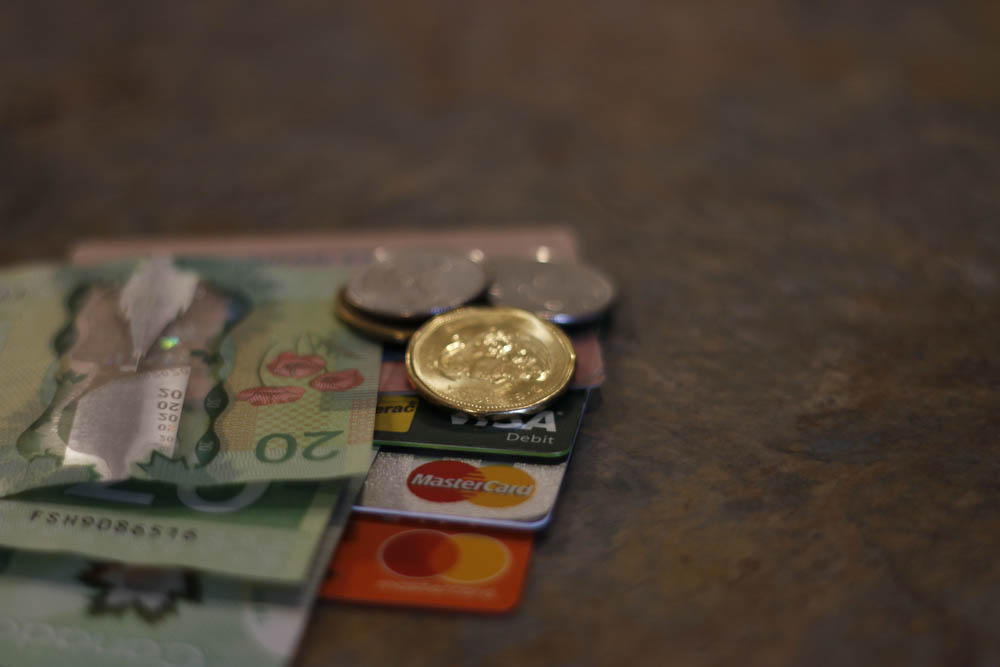
Building financial resilience means more than just saving money—it’s about developing habits, knowledge, and confidence that help you weather life’s ups and downs. Whether you’re navigating student loans, managing your first paycheck, or planning for long-term goals, these practical tips can help you take control of your financial future with clarity and confidence.
- Start Investing Early – Use robo-advisors like Wealthsimple or Questrade to begin with low fees and diversified portfolios.
- Use Cash-Back and Rewards Wisely – Choose credit cards that align with your spending habits and pay off balances monthly.
- Avoid Lifestyle Inflation – As your income grows, resist the urge to upgrade everything. Save or invest the difference.
- Review Subscriptions – Audit your monthly subscriptions—streaming, gym, apps—and cancel what you don’t use.
- Shop Around for Insurance – Compare rates annually for car, tenant, and health insurance. Loyalty doesn’t always pay.
When to Speak with a Licensed Insolvency Trustee
For young adults facing persistent debt or financial stress, consulting a Licensed Insolvency Trustee (LIT) can be a constructive step. LITs are federally regulated professionals authorized to administer consumer proposals and bankruptcies, but their role extends beyond insolvency proceedings. They offer confidential, judgment-free consultations to assess your financial situation, explain available options, and help you make informed decisions.
Importantly, LITs can also provide practical budgeting advice and help you develop a realistic financial plan. Many offer tools and strategies to track spending, manage debt repayment, and build savings habits. For individuals who struggle with staying on track, LITs can serve as a source of accountability and support, helping to prevent future money mistakes and improve long-term financial stability.
Many trustees provide a free initial meeting, allowing individuals to explore solutions without obligation. Whether you’re overwhelmed by credit card debt, unsure how to prioritize loan repayments, or simply need guidance on managing your finances, speaking with an LIT can clarify your rights and responsibilities and help you avoid more serious financial mistakes.
Conclusion – Early Choices, Lifelong Growth
Everyone makes money mistakes—especially in their 20s. Many Canadian young adults are navigating the same financial challenges. Whether it’s building credit, managing debt, or figuring out how to save, mistakes are part of the learning process. What matters most is how you respond and grow from them.
By recognizing common financial mistakes, exploring ways for how to avoid financial mistakes, and applying practical money tips for young adults, you’re already taking meaningful steps toward financial confidence. Whether you’re building your first budget, paying off debt, or simply trying to make sense of Canadian personal finance, know that support is available and progress is possible.
Financial stability isn’t built overnight. It’s shaped by small, consistent choices—and by asking for help when you need it. Your 20s are not about getting everything right. They’re about laying the groundwork for a future that reflects your values, goals, and resilience.
So take heart. You’re not behind. You’re just getting started—and that’s a powerful place to be.
Take the First Step Toward Financial Clarity
If you’re feeling overwhelmed by debt or unsure how to manage your finances, don’t wait. Licensed Insolvency Trustees offer more than debt relief—they provide hands-on budgeting support and clear, practical guidance to help you take control. A free, confidential consultation could be the turning point toward clarity, confidence, and lasting financial stability. Reach out today and take that first step.
Financial Literacy – Key Skills for Preventing Debt Accumulation

Financial literacy is having the knowledge and skills to make informed decisions related to effective money management. It involves acquiring, developing and using the information and skills acquired in such a way that one becomes accustomed to handling money in a way that helps you avoid debt, live within your means and be financially stable.
Effectively managing money in your everyday activities is one of the most valuable things you can give to yourself. Not many people receive very good financial education. A recent Yahoo Canada survey has revealed that only 21% of adults think they have strong financial literacy skills, while 50% believe they are somewhat financially literate and continue to learn, and 24% admit they know some basics but not much beyond what they need to.
The lack of understanding of the fundamentals is what leads many people to issues related to money, such as poor spending decisions, uncontrollable credit card debt, multiple lines of credit, home foreclosure, bankruptcy and other negative consequences.
Here are some skills and concepts that are very important to acquire when building up financial skills:
1. Budgeting and Expense Tracking
Budgeting involves tracking how much money you earn, how much you’re spending and where you spend it. Mastering this fundamental skill enables you to identify unnecessary expenses, cut back on overspending and set aside funds for savings and emergencies.
How it Prevents Debt – Tracking where your money goes makes you aware of what you can afford, helping you to live within your means and reducing the need to use credit to meet daily expenses.
2. Understanding Credit and Loans
Credit and loans are ways to borrow money. It’s important to understand how each works and learn how to match your financial goals with the loans and lines of credit that are right for you. This includes knowledge about interest rates, terms, and repayment schedules as well as credit scores and how they affect borrowing power and loan costs.
Credit refers to the ability to borrow money with the promise to pay later. Examples are credit cards, lines of credit, or store credit.
A loan is a specific amount of money that is borrowed and must be repaid with interest over a set period of time. Examples are personal loans, mortgages and car loans.
How it Prevents Debt – Knowing when to use credit responsibly and understanding the long-term consequences of high-interest loans can prevent you from taking on more debt than you can manage. It can also help you avoid borrowing high-interest loans, such as payday loans, which can quickly put you in an uncontrollable debt situation if not managed properly.
3. Emergency Savings
Putting money aside for unexpected expenses, such as medical emergencies or car repairs, is another essential skill for effective money management.
How it Prevents Debt – An emergency fund acts as a cash reserve which cushions you from borrowing money to pay for unplanned bills that are not part of your routine monthly expenses and spending. These financial emergencies can include car repairs, home repairs, medical bills, or even a loss of income. With savings set aside, you are less likely to rely on credit cards or loans in times of need which can easily lead into uncontrollable debt if not paid on time.
4. Managing Debt
Another key part of financial literacy is understanding how to manage existing debt and also knowing when and how to avoid taking on additional debt.
The more money you owe, the more you increase the risk of not likely being able to repay your debt. Skipping payments or paying late, especially on high-interest debt, can quickly lead into a debt trap that is difficult to escape from. This can negatively impact your credit score, making it difficult for you to get approval for bigger loan amounts.
How it Prevents Debt – By managing existing debt wisely, which includes prioritizing high-interest debt, making timely payments, and using debt consolidation or refinancing options when appropriate can help avoid excessive interest charges and other penalties which can quickly lead to debt accumulating and spiraling uncontrollably.
5. Understanding Taxes
Tax literacy is an important component of financial literacy, as a significant portion of personal income is allocated to paying taxes. Knowing how taxes work involves tax brackets, deductions, credits, exemptions and tax liabilities.
How it Prevents Debt – Boosting your understanding of taxes can help you plan your finances more effectively and meet tax obligations on time. This helps you avoid unexpected tax bills at the end of the year, which could result in the need for you to borrow money to pay off any outstanding taxes in order to avoid hefty penalties or interest charges.
6. Setting Financial Goals
Setting clear, realistic financial goals (short-term, medium-term, and long-term) helps to give you guidance as you work to make your financial dreams a reality. Tangible, well-articulated goals provide financial direction by helping you track your progress, stay accountable, and stay focused and motivated to reach milestones.
How it Prevents Debt – By having specific goals, you stay focused and avoid impulsive spending. This ensures that your money is going to where you plan to use it effectively and also helps you avoid using credit for non-essential purchases.
7. Seeking Financial Advice
Another important part of financial literacy is seeking professional advice when you need it. This could include working with a licensed insolvency trustee, financial advisor, credit counselor, or debt management expert.
It is worth noting that in Canada Licensed Insolvency Trustees (LITs) are the only debt advisors that are federally regulated by the Office of the Superintendent of Bankruptcy to give advice on all debt relief solutions, including budgeting, debt consolidation, counseling and DMP’s, consumer proposals and bankruptcies. LITs are the only advisors who can administer the formal insolvency programs in Canada such as consumer proposals and bankruptcies. Anyone can offer debt relief advice or services but not all debt advisors are licensed by the federal government to act as a Licensed Insolvency Trustee. LITs undergo a rigorous licensing program that takes years of study, exams, articling, and an oral exam.
How it Prevents Debt – Seeking professional advice is a proactive approach you can take to prevent debt from spiraling out of control. Expert advice and guidance can provide you with tailored strategies to effectively manage or reduce debt.
LITs can help with debt problems by:
- Reviewing your financial situation.
- Advising you on all debt relief options so you can make informed choices.
- Guiding you to the best solution for your unique situation.
- Guiding you through the process of the debt relief program that you choose to enter into.
Find Debt Relief Now
You may be just starting out with one of the most important financial basics– spend less than you earn, and keep on top of bill due dates—and that’s terrific, you’re on the right track, keep on going. Keep reading books, listen to podcasts, subscribe to financial content, or talk with people whom you think are financially literate. As you go through life, stay committed to your financial education. Be a lifelong learner and continue to seek out new information and strategies that you can apply to your life to help improve your financial well-being and help you be confident in the financial decisions you make.
At Richard Killen & Associates, we’re here to assist you with your debt problems. Whether you want to brush up on your financial literacy and money management skills or you’re currently facing uncontrollable debt and need guidance to get back on track, we are here to help you. We at Richard Killen & Associates have assisted thousands of people like you to become debt free. Contact us today and speak to one of our Licensed Insolvency Trustees.
How to Get Tax Debt Relief in Canada – Step-by-Step Guide

Taxpayers have several avenues for seeking tax debt relief in Canada, each tailored to different circumstances and financial situations. Tax debt is not insurmountable despite how it may feel. Keep in mind that the CRA does not intend to punish you or to go after you for money you don’t have. In fact, the agency offers some financial relief solutions for people who can’t pay, and it’s wholly possible to make a payment arrangement with the tax agency to help pay off your taxes over time.
Whether you’re a small business owner, a self-employed freelancer or are facing unforeseen circumstances and find yourself having personal tax debt, it’s not uncommon for individuals and businesses to find themselves owing the Canadian Revenue Agency (CRA). Facing overdue tax bills can be a daunting burden, and anyone can need support especially if you’re facing an overwhelming bill and the possibility of added interest and penalties.
If you’re struggling with tax debt, don’t panic. This step-by-step guide will walk you through the process of obtaining tax debt relief in Canada.
Understand your Tax Debt
The first step in resolving tax debt is to understand its nature and scope. Take stock of all outstanding tax liabilities, including income tax, GST/HST, payroll taxes, and any related penalties and interest. Review your tax assessments and correspondence from the CRA to ensure you have a clear understanding of what you owe.
Evaluate your Options
Once you have a clear picture of your tax debt, it’s time to determine your options for relief. In Canada, there are several avenues available to pay off overdue tax bills, including:
- Payment Arrangements – Taxpayers can negotiate payment arrangements with the Canada Revenue Agency (CRA) which could involve monthly installment payments to spread out the payment of their tax debt over time. This can help alleviate immediate financial burdens and make it easier to manage payments.
- Taxpayer Relief Provisions – The CRA has discretion to waive or cancel penalties and interest in certain circumstances, particularly if you can’t pay due to events beyond your control such as financial hardship due to loss of employment, extraordinary circumstances like a serious illness or a natural disaster, or administrative errors on the part of the CRA.
- Voluntary Disclosures Program (VDP) – The VDP allows taxpayers to voluntarily disclose previously unreported income or correct inaccurate information without facing penalties or prosecution. This program can be beneficial for individuals or businesses who want to come forward and rectify their tax situation.
- Consumer Proposals – If your tax debt is part of a larger financial problem, you may consider filing a consumer proposal under the Bankruptcy and Insolvency Act. A consumer proposal is a formal agreement between you and your creditors to settle your debts for less than the full amount owed.
- Bankruptcy – In extreme cases where other options are not feasible, bankruptcy may provide relief from tax debt. However, bankruptcy will be considered by most people as a last resort.
Gather Documentation
Regardless of which tax debt relief option you choose, gathering thorough documentation is crucial to support your case. This ensures transparency and accuracy and will help you present a strong argument. Documentation may include financial statements, bank statements, tax returns, any correspondence with the CRA, and any other relevant paperwork. Make sure to keep all records organized and readily accessible for reference whenever needed.
Communicate with the CRA
Once you have assessed your options and gathered your documentation, it’s time to contact the CRA to discuss your situation. Be prepared to provide detailed information about your financial circumstances and explain why you are unable to pay your tax debt in full. Keep in mind that it’s more important than ever to have an open and honest line of communication with the CRA rather than avoiding or ignoring the situation. This will help you save a lot of legal hassle and a lot of money. Being proactive and cooperative can often result in more favorable outcomes for both parties involved.
Negotiate with the CRA
Depending on your circumstances, you may be able to negotiate a favorable outcome with the CRA. This could involve negotiating a payment arrangement, requesting taxpayer relief, or exploring other options for resolving your tax debt. Keep in mind that the CRA will work with you to resolve your tax obligation. If you pro-actively reach out to the CRA to discuss payment options and propose a reasonable payment plan that you can realistically commit to, they are more likely to be accommodating. The agency generally prefers to work with taxpayers who demonstrate a genuine effort to resolve their tax obligations.
Formalize Agreements
If you reach a resolution with the CRA, be sure to formalize any agreements in writing. This is essential for clarity, assurance and accountability and to protect the interests of all parties involved. A formal agreement will help ensure that both you and the CRA understand the terms, rights, and obligations laid out in the resolution, and provide a tangible record of the agreement in case there are any misunderstandings or disputes in the future.
Follow Through
Once you have obtained tax debt relief, it’s important to follow through on your commitments.
Make timely payments as required under the agreed-upon payment arrangement and comply with any other obligations outlined in your agreement with the CRA. This demonstrates good faith and reliability, which can help maintain a positive relationship with the CRA and prevent any further complications or penalties. Consistently meeting your obligations also helps to ensure that you remain in compliance with tax laws and regulations, which contributes to your financial stability and peace of mind in the end.

Seek Professional Advice
Keep in mind that if you have tax debt you can’t afford to pay, you have options available for debt relief. However, finding the right resolution to resolve tax debt can be complex. The first step is to always seek professional advice from a tax professional or financial advisor such as a Licensed Insolvency Trustee (LIT). They can help you explore your debt relief options, navigate the process step by step, and ensure that you achieve the best possible outcome. A Licensed Insolvency Trustee can also provide relief from all collections activity and help you eliminate your tax debt through a consumer proposal or with filing bankruptcy.
Dealing with tax debt can be stressful, but it’s important to remember that you’re not alone. Many Canadians are carrying tax debt. In fact, the total amount of tax debt in Canada is currently at $29 billion. There are several options available for obtaining tax debt relief in Canada. With careful planning and persistence, it’s possible to regain control of your finances and move forward with confidence. By understanding your options, gathering the necessary documentation, negotiating with the CRA, and seeking professional advice from a Licensed Insolvency Trustee, you can take decisive steps towards resolving your tax debt and achieving financial peace of mind.
Understanding Voluntary Car Surrender in Canada: What You Need to Know

Voluntary car surrender in Canada in general can be a viable option for individuals facing financial difficulties, or those looking to get rid of a vehicle they no longer need or afford.
Owning a car is often perceived as a symbol of independence and convenience, providing individuals with a sense of personal safety and security, the freedom to travel at any time and generally making life easier. However, circumstances can change unexpectedly, and car owners can fall behind on their car loan payments and be forced to reevaluate their transportation needs and decide to part with the vehicle. In such situations, voluntary car surrender will be a potential solution. There will be others, such as selling the car, but returning the car may be simpler and more effective. It will depend on a lot of different factors.
Surrendering your car can be a difficult decision and the process can be complex, but it’s essential that you understand all the implications before proceeding.
Here’s what you need to know:
The Basics of Voluntary Car Surrender
Voluntary car surrender (AKA voluntary repossession) basically requires you, the borrower, to willingly return the vehicle to the lender. The process involves choosing to inform your lender that you can no longer make payments and intend to return the vehicle.
The decision to voluntarily surrender the car generally arises when you find yourself unable to afford the monthly payments, or when you wish to terminate a loan or lease agreement. Unlike involuntary repossession, where the lender seizes the vehicle after loan payments have become delinquent, voluntary surrender is initiated by you, the borrower.
How Does Voluntary Car Repossession Work?
Most car loans are secured by the car itself. This means that when you take on the loan the lender will require that the vehicle to be put up as collateral (or security) for the loan agreement. When you default on the loan by falling behind with the monthly payments or by letting the insurance on the car lapse, it will put the car at risk of repossession, meaning the lender can claim the vehicle without notice. Mind you it usually doesn’t happen until you fall more than one or two months.
If you can no longer make the payments, you can choose to initiate a voluntary repossession and pro-actively contact the lender to discuss options and consequences, as well as work out the arrangements to deliver the car to the lender. There are potential complications.
As soon as the vehicle is returned to the lender they will attempt to sell it and apply the sale proceeds against what’s still owing on the loan. However, it’s important to know that even if the car is returned voluntarily you will still be responsible for the balance owing if the loan didn’t get paid off in full by the sale proceeds.
In fact, the vast majority of these situations results in you owing something, sometimes quite a lot, to the lender – and the car is now gone!
To add insult to injury, so to speak, you will probably also be responsible for repossession fees, storage fees, and other costs incurred by the lender when the vehicle is sold at auction.
Impact on Credit Score
A significant concern associated with voluntary car surrender is its potential impact on credit scores. While surrendering the vehicle may seem like a responsible proactive step to benefit all concerned, it will damage your credit score.
The surrender is usually reported to credit bureau as a “voluntary repossession”, the key word being repossession. Depending on your previous credit history, it can drop your score from between 60 to 240 points and take your credit rating down to an R-8, which is just above the rating for a bankruptcy filing. A repossession also stays on your credit report for up to seven years. This can have negative repercussions on your future ability to secure another car loan, or other loans or credit cards. It can have a large impact on your future financial flexibility.
The Importance of Communication with Lenders
Before proceeding with voluntary car surrender, it is essential for borrowers to communicate openly and transparently with their lenders. Lenders may offer alternatives to help borrowers through financial difficulties, such as loan restructuring, payment deferral, or refinancing options. Exploring these alternatives can potentially mitigate the negative impact on the borrower’s credit and financial situation while maintaining a positive relationship with the lender.
Understanding Legal Implications
Voluntary car surrender in Canada is governed by Federal, provincial and territorial consumer protection laws and the terms outlined in the loan or lease agreement. It is crucial for borrowers to familiarize themselves with these laws and terms to understand their rights and obligations fully. Seeking advice from legal professionals specializing in consumer rights or debt management can provide valuable insights and guidance, ensuring that borrowers navigate the process within legal boundaries. Make sure you talk to a Licensed Insolvency Trustee.
Evaluating Vehicle Condition
The condition of the vehicle plays a significant role in determining its value and any potential deficiency balance owed by the borrower. Returning the car in good condition is advisable, as it can maximize its resale value and minimize any additional costs associated with repairs or maintenance. This includes removing all personal belongings from the vehicle and addressing any necessary maintenance or repairs before surrendering it to the lender.
The Importance of Documentation
Keeping thorough documentation of the voluntary surrender process is essential for your protection and to avoid problems. This includes maintaining copies of all correspondence with the lender, agreements reached, confirmation of the surrender, and any paperwork related to the transaction. Documentation serves as evidence in case of disputes or discrepancies, providing a clear record of your actions and communications throughout the process.
Planning for Future Borrowing
Borrowers should also consider the long-term implications of voluntary car surrender on their financial future. While it may initially impact your credit score, you can recover from it by taking proactive steps to address your financial problems and responsibly taking on smart strategies that can help to rebuild credit over time. These strategies may involve establishing a solid payment history, reducing any outstanding debts, keeping credit utilization low and demonstrating responsible financial behavior to lenders.
Exploring Alternatives to Voluntary Surrender
Before opting for voluntary surrender, you should first explore alternative solutions that may better suit your financial circumstances. These alternatives may include selling your car privately, trading it in for a more affordable option, refinancing or seeking assistance from credit counseling agencies. By exploring other alternatives, you may be able to modify your loan terms to help you keep up with future payments as well as find a solution that addresses your other financial needs to keep you from further defaulting while also minimizing the impact on your credit report and overall financial well-being.

Seeking Professional Advice and Guidance
Given the complexities and potential consequences of voluntary car surrender, seeking professional advice is advisable. Financial advisors, credit counselors, and experts such as Licensed Insolvency Trustees can provide personalized guidance based on your specific circumstances. These debt professionals can help you understand your options, navigate the process effectively and make informed decisions that align with your financial goals and priorities.
Empowering Decision-Making
Voluntary car surrender in Canada can be a complex and challenging decision for many borrowers. Before proceeding, it is essential to thoroughly understand the process, implications, and available alternatives. By communicating with lenders, seeking professional advice, and exploring all options, borrowers can make informed decisions that best suit their financial situation and goals. Ultimately, voluntary car surrender in Canada should be approached thoughtfully and responsibly, with a focus on minimizing the impact on credit and securing a stable financial future.
If your debt levels have become unmanageable and you are sure that you can no longer afford to keep your car, the first step to take is to speak to a Licensed Insolvency Trustee (LIT) who can help you get a clearer picture of your financial situation and what debt management solutions are available to you. It may be possible for a Licensed Insolvency Trustee to help you work out a few adjustments on your budget and your overall debt obligations to make it much easier to make your car repayments so you can avoid a voluntary repossession altogether.
Do Not Cash IN RRSP’s To Pay Taxes Owed In Ontario
Hi it’s Richard Killen it’s tax time again and some of us when we file taxes are going to owe money. And some of us who owe that money have RRSP’s.
I want to suggest to all of you if you’re in that position where you have RRSP’s and you owe money on your taxes this year, don’t cash them in until you’ve talked with us. There are options that would allow you to keep your RRSP’s and still get your taxes taken care of.
I invite you to give us a call.
Do You Owe Taxes Based ON CERB Benefits?
Hi I’m Richard Killen, you may be like a lot of people who received CERB benefits last year.
You were surprised to find out how much income tax you owe this year on all those benefits.
I’m trying to tell people for quite a while now, that shouldn’t be a real problem for you.
Give us a call at Richard Killen and Associates and we’ll discuss all the options that you can use to resolve that problem.
Facebook Live Webinar: “Getting debt help: Where to go when you face financial difficulties”

CAIRP is hosting a Facebook webinar on Wednesday on how to get help with your debt. You may find this interesting. If you find yourself in debt, watch the webinar, then give us a call. We would welcome helping you to overcome any debt issues you may have.
After watching, Please join us and help spread the word about CAIRP’s free Facebook Live panel discussion being held on November 25th, as part of the FCAC’s Financial Literacy Month.
This webinar is a great opportunity to help educate the public on what Licensed Insolvency Trustees do and how we can help them to better manage their debts. Our speakers will be sharing their views from an industry perspective. We would like to thank those of you who have already shared this event within your network. If haven’t had a chance to do so, we encourage you to:
- Invite your clients and people in your personal and professional networks who you think would benefit from attending the webinar
- Like and share our promotional posts on CAIRP’s Facebook, Twitterand LinkedIn pages
- Put us in touch with your marketing/social media teams to further promote this webinar
Webinar details:
Topic: Getting debt help: Where to go when you face financial difficulties
Date and Time: Wednesday, November 25, 2020 from 2 – 3 pm ET
Speakers:
- Nathan Sugeng, MBA, CIRP, LIT, Managing Partner, Fontaine & Associates, Ontario
- Bridget van Wyk, CPA, CA, CIRP, LIT, Regional Practice Leader, A. Farber & Partners Ltd., British Columbia
- Andre Bolduc, CPA, CA, CIRP, LIT, Senior Vice President, BDO Canada LLP, Ontario
- Tania Daher, CIRP, LIT, Licensed Insolvency Trustee, Ginsberg Gingras, Quebec
Venue: Facebook page of Canadian Association of Insolvency & Restructuring Professionals
How to view the webinar?
To view the live webinar on CAIRP’s Facebook page, please follow these steps:
- Log into your personal Facebook account
- Visit CAIRP’s Facebook page
- Click the ‘Like‘ button
- Tune into the live webinar on the page on Nov 25 from 2 – 3 pm ET
To add the webinar to your calendar, please click here.
This webinar will also be recorded and made available on the CAIRP website. If you have any questions about the webinar or how to view it, please contact jovita.dsa@cairp.ca.
We look forward to seeing you there!
How to Create a Budget with Irregular Income

Following a budget can be challenging enough when you have a steady job that pays you a regular basic income, but can you imagine how extremely difficult it can be to create a budget with irregular income?
With a regular income, you can predict exactly how much money you’ll have coming in each and every month and you know exactly how much money you have to cover all your expenses. However, with an irregular monthly income, you have to contend with fluctuating income levels and commissions. It’s tough to plan when:
- You don’t know how much you’ll earn,
- You don’t know when you’ll get paid, and
- You don’t know how much you’ll make the following month.
This is a common scenario for people who are:
- Self-employed
- Freelancers
- Contractors
- Working on hourly rates like bartenders, waiters and waitresses, custodians
- Working on a commission basis like salespeople
- Have side gigs that change up their income every month
- When your income is reduced temporarily, for instance, because of COVID-19
If your income varies wildly depending on the day or season, here are some strategies to help you effectively budget.
Determine your baseline

Start by adding all the money that you are certain of for the month as income. This can be money you have coming in from your side hustle or business, plus unemployment benefits you may be receiving under the COVID-19 Emergency Response Act.
Your baseline is the minimum amount you want to focus on regardless of whether you make more or you earn less, for month by month. This is the amount you will work with to cover the bare minimum expenses you need to pay for on a monthly basis.
Track your monthly spending from previous months
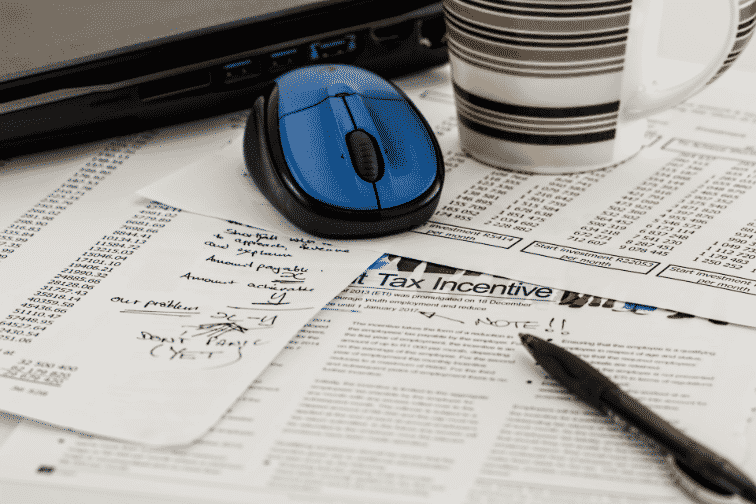
The next thing to do is make a list of your spending and bills. This step is crucial to help you know what you absolutely need to earn monthly in order to pay your bills and get by.
Itemize each expense. For example:
Create a category for Necessities — essential, ongoing monthly expenses:
- Rent or mortgage
- Utility bills
- Food and groceries
- Medical bills
- Transportation and fuel and car maintenance
- Daycare
- Taxes
- Loans and debt repayments
- Savings, investments
Create another category for Discretionary Expenses:
- Cable/television bill
- Entertainment
- Expenses for fitness, sports or hobbies
- Take out or dining expenses
- Shopping for clothing, toiletries
During COVID-19, it may be easier to cut discretionary expenses completely. Expenses for dining out, entertainment and travel won’t be necessary due to social distancing measures. This means you may have more money to assign to debt repayments and savings for the month.
Allocate every penny
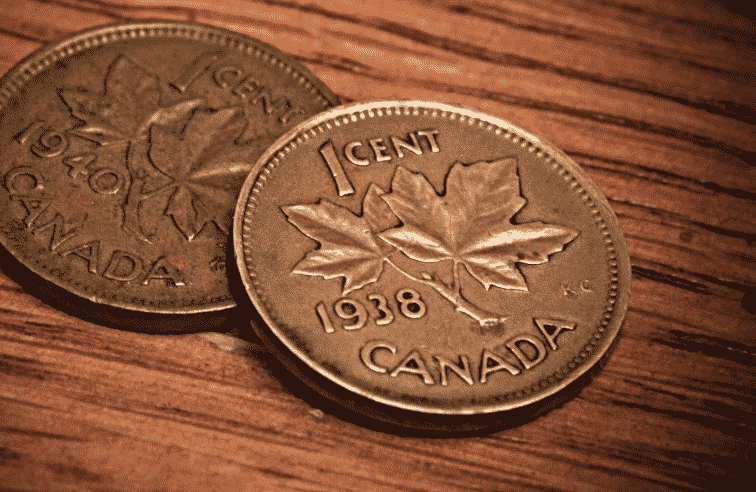
Once you’ve created your budget for necessities and added up your unnecessary expenses, you’ll know exactly how much money you need to make it through the month.
Expenses under the Necessities group are things that you couldn’t reasonably live without. So, more or less this amount is fixed. Those under the Discretionary group are the expenses that you’ll need to cut if you’re trying to make your budget fit your income.
The goal is to adjust your discretionary expenses until you’re back to living within your means.
Make sure you divide every income that comes into your necessities before anything else, otherwise you are going to run the risk of spending half of your income on discretionary items and not having enough left over for food and groceries.
Each month, repeat the process and make a new budget based on that month’s income and expenses, assigning each dollar in your budget to a particular expense.
Build your emergency fund
When you are living on an irregular income, it’s crucial to have ample savings to help fill in the gaps when bad months come along. Make sure to allocate a portion of your income into an emergency fund. If you are just starting out, it would be best to put any extra money that you may earn towards emergency savings first. Do this until you have at least three to six months of expenses on hand.

Create financial goals
If there is any extra money after expenses and emergency savings, make sure you carefully plan out what you’re going to do with it. Is it going towards paying off debt? Is it for savings for your children’s college education? Will it go towards your retirement savings? It’s important to set a goal for any excess money you may have so that you avoid the risk of blowing it.
A simple, stripped-down budget where you can see just your essential expenses, and nothing else, can be helpful in managing your spending if you have irregular income and also if you’ve experienced a job loss or if your income is reduced temporarily because of COVID-19. It can help you see exactly where every dollar is going each month and it can help you avoid unnecessary spending. When you budget with irregular income, every penny counts and there’s no room for money to slip through the cracks.
If you have trouble doing this and would like to discuss it we would be very happy to do so. Just call us at 1-888-545-5365 or email us at info@killen.ca.
If things have gotten troublesome with your debt situation, especially with this Covid-19 virus don’t hesitate to contact us for a telephone or Skype interview. We can help.
